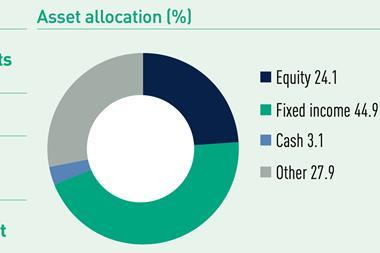The Pensions Authority for Ireland has published guidance for trustees on the own-risk assessment (ORA). The latest date by which a pension scheme’s first ORA can be completed is 22 April 2024.
According to the Authority, the ORA must identify the actions that are needed to effectively manage and where appropriate mitigate identified risks. It must also provide an objective assessment of risk and not “merely a rationalisation” of a scheme’s current position.
Its overall purpose is to ensure members’ benefits are well protected and that a scheme delivers good member outcomes, it stated.
The Pensions Authority said that the ORA process must take account a scheme’s size, nature, scale and complexity. It added that it should be “clearly documented” how the ORA has been tailored to suit a specific scheme.
Risk identification
As part of the ORA process, the nature of a scheme, including whether it is a defined contribution (DC) scheme, a master trust or defined benefit (DB) scheme should be considered, the Authority stated.
For DB schemes, trustees are told to address funding and solvency requirements, including the implications of issues such as scheme maturity and financial sustainability, and the strength of the employer covenant.
The ORA for a DB scheme must include the trustees’ evidence-based view of the strength of the employer covenant, the Authority said. It added that this evidence should comprise of qualitative and, where available, quantitative data.
For DC schemes, the Pensions Authority said the ORA should be “not less thorough” than for DB schemes. It said that trustees of DC schemes must assess the risks to member outcomes arising from a scheme’s investment.
This assessment, it said, should be “comprehensive and include a review of all member investment options and not be limited to a review of the default investment strategy”.
For master trusts, the ORA should include risks that are specific to the running of a multi-employer scheme where administration services involve the collection of contributions and data from multiple employer and member sources.
Master trusts which have close connections with for-profit entities can be exposed to an increased risk of conflicts of interest, which need to be assessed and managed, it stated.
It added: “Potential conflicts of interest can arise from the relationship between the founder of the master trust and the trustees or where the founder acts as a service provider to the master trust.”
According to the guidance, trustees must carry out full ORAs at least once every three years. However, in the event of any significant change to a scheme’s risk profile, an updated ORA should be completed without delay and within three months of the change.
Reporting
The Authority said that ORAs should be documented in a “comprehensive written report” and include:
- a detailed account of how a scheme’s risks were identified, measured, and evaluated;
- what additional mitigations (if any) the trustees have decided to implement to bring any current or emerging material risks adequately under control;
- how ORA findings will be, or have been, integrated into the risk management system of a scheme; and
- the planned date of the next ORA.
Read the digital edition of IPE’s latest magazine
































No comments yet